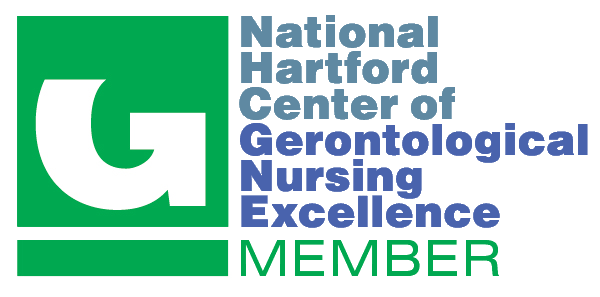Maternal Health Crisis

From left, James Muchira, Jeremy Neal, Mulubrhan Mogos, Julia Phillippi
VUSN Maternal Health researchers.
Promising research focuses on the mother’s health to ensure her—and her child’s— well-being in the short and long term
The tie between mother and child is never closer than while the child is in the womb. Recognizing the importance of this time in human life, Vanderbilt University School of Nursing has chosen to make Pregnancy Outcomes, Mother and Infant Health, and Family Health one of its four signature areas of research. Research currently underway by four VUSN research faculty aims to improve maternal health, with its far-reaching impact on health outcomes affecting multiple patients across generations.
Mulubrhan Mogos, PhD, assistant professor of nursing
Pregnancy is like being engaged in heavy exercise and functions like a natural stress test on the cardiovascular system, explains Assistant Professor of Nursing Mulubrhan Mogos. When the cardiovascular system fails, mothers can develop hypertensive disorders of pregnancy. Among the most common of these disorders are chronic hypertension, preeclampsia (a sudden spike in blood pressure) and eclampsia (seizures or coma resulting from preeclampsia), preeclampsia superimposed on chronic hypertension, and gestational hypertension. Mogos has shaped his research around how these pregnancy-related cardiovascular health issues affect maternal and child health. His studies have looked at hospital admissions related to hypertensive disorders of pregnancy and heart failure during pregnancy. The resulting analysis concludes that women who experience hypertensive disorders of pregnancy are more likely to be readmitted into the hospital within six weeks of giving birth, causing untold distress and trauma, sometimes even death. Mogos and colleagues also found that the condition of heart failure, often thought of as a cardiovascular disorder affecting older people, occurs in pregnant women.
Importantly, he found that almost 60 percent of pregnancy-related heart failure diagnoses occurred during the postpartum period, even though the postpartum period represents less than 2 percent of pregnancy-related hospitalizations.
“These interrelated findings were quite surprising and have led to my current interest in identifying early signs of poor cardiovascular health that a woman might experience late in pregnancy and shortly after delivery,” says Mogos, who also is a pediatric nurse practitioner. “If we can identify women at increased risk of complications early during gestation, we have a greater chance to prevent or reduce short- and long-term health and economic burdens.”
Mogos advocates for a move toward using 24 hours of home-based blood pressure monitoring in high-risk pregnant women, in addition to routine, clinic-based blood pressure monitoring. Rhythmic changes to blood pressure known as night dipping or morning surge are predictive of cardiovascular risk but are rarely measured, he says.
Through a pilot project funded by the School of Nursing, Mogos is currently recruiting women within 20 weeks of gestation to measure 24-hour ambulatory blood pressure data. In this work, Mogos and his team intend to generate pilot data that test the utility of 24-hour ambulatory blood pressure profiles as a way to identify women at increased risk before the occurrence of the traditional signs and symptoms of hypertensive disorders of pregnancy.
Before starting his research career, Mogos practiced nursing in a neonatal intensive care unit in Eritrea. He noticed that almost 95 percent of neonatal hospitalizations are related to events that happened during pregnancy or childbirth—and just how difficult it was to treat a baby without understanding its mother’s pregnancy and events surrounding childbirth.
“There are some things that can easily be prevented if the mother is well taken care of,” he says, “but as a third-world country, Eritrea’s maternal mortality rate is very high.”
Once in the U.S., he discovered the stark reality that the American maternal death rate is also high when compared to other developed nations. He decided to use pregnancy as a window of opportunity to identify women who are at increased risk of cardiovascular disease, one of the leading causes of maternal morbidity and mortality in the U.S. By identifying women who are at increased risk of future cardiovascular disease, he believes providers can provide tailored, evidence-based postpartum care beyond the traditional six-week postpartum period.
Julia Phillippi, PhD, director of the Nurse-Midwifery Specialty
Julia Phillippi, PhD, MSN’99, CNM, FACNM, FAAN, directs Vanderbilt’s No. 1-ranked Nurse-Midwifery Specialty in the school’s master of science in nursing program. She is also a researcher focused on how the format and content of prenatal care influence a mother’s desire to access care. By looking at birth locations, either at birth centers or hospitals, and at health care providers present during the birth, Phillippi measures the influence of those choices on birth outcomes.
Her research has shown that with midwives present during the labor and delivery, women with low-risk pregnancies have better outcomes.
“Midwives are well-trained to be present and to perform interventions that help women have a birth experience where they feel safe and comfortable,” Phillippi says.
Acknowledging the positive predictive value of measuring outcomes of low-risk pregnancies, Phillippi highlights the importance of the relationship between care providers and mother. A relational, wraparound experience throughout the pregnancy that builds trust helps women feel safer with their care provider, particularly if a complication were to arise during labor.
“Perinatal care is a fine line, and it is difficult to tell what is normal. If expectant mothers have someone whom they trust and feel comfortable sharing their experience with, those care providers can intervene earlier, keeping mom and baby safe,” Phillippi says.
As a teenager, Phillippi knew that midwifery was her calling. From age 16, she worked in a rural birth center in Sweetwater, Tennessee, a critical access point for women in the region to access prenatal care. The birth center taught Phillippi to be a present and attentive caregiver, and serendipitously, it was the final clinical site during her training as a nurse midwife at Vanderbilt. After years of providing full-scope midwifery care, Phillippi transitioned to intrapartum care and a research and teaching position in the School of Nursing.
“Teaching is a lot like midwifery. We have to create safe learning environments where people can flourish while they are doing all of the hard work,” Phillippi says.
Phillippi is interested in measuring hospital and home birth outcomes using a database large enough to identify meaningful differences by site. She also is studying access to treatment for opioid use disorder during pregnancy—a particular problem in Tennessee, where overdose is the leading cause of maternal death. Ensuring women have access to person-centered models of care so they can have the best possible pregnancy outcomes is the foundation of her work.
James Muchira, PhD, assistant professor
Assistant Professor James Muchira is conducting a study of intergenerational transmission of cardiovascular risk. Working with 73-year prospective multigenerational data from the longitudinal Framingham Heart Study, Muchira looks at patterns of cardiovascular disease segmented by population groups and risk factors.
His research, recognized for its impact by the American Heart Association and the European Association of Preventive Cardiology, has shown that favorable heart health of mothers can delay the first onset of heart disease, stroke or heart attack in their young adult children by as much as nine years.
By looking at the signatures of cardiovascular health—diabetes, high blood pressure, body mass index and blood glucose levels—in parents by gender, Muchira found that it is the health of the mother—rarely the father—that has a significant impact on a child’s heart heath and consequently, the onset of heart disease.
“These findings resulted in our strong recommendation for interventions that improve maternal health,” Muchira says. “The studies have also led me to my current research path: looking into how early these risk factors begin and how epigenetic markers of cardiovascular disease are passed from mothers to their children.”
His work is providing some of the first quantifiable data proving that intergenerational transmission of risk factors for cardiovascular disease is passed from mother to child. The data are essential to the broad acceptance and resources required to improve current health conditions for mother and child.
“The high burden of heart disease and diabetes pushed me forward because so little was known in that area, especially when I was a nurse clinician in Kenya,” Muchira says. “I was involved in screening of heart disease and diabetes, and I observed high prevalence of cardiovascular disease. That kept me asking questions about why we have a challenge we did not think we had at that time.”
Muchira is looking at a holistic, life course view of cardiovascular health. His second current project is investigating heart health of children between 1 and 5 years old in an effort to understand the connection between a mother’s cardiovascular health and a child’s risk for obesity.
“The only way to break the cycle of intergenerational cardiovascular disease and ensure healthy development of offspring is to look at young children and their parents,” Muchira says.
Jeremy L. Neal, PhD, CNM, assistant professor of nursing
Jeremy Neal, assistant professor and co-director of the School of Nursing Postdoctoral Program, is focused on improving labor and birth outcomes for mothers and babies, specifically through limiting the use of interventions aimed at speeding labor progress among women who are already progressing adequately in labor, as well as by safely decreasing cesarean births. In 2019, cesarean births accounted for 31.7 percent of all deliveries in the U.S., according to the Centers for Disease Control and Prevention.
“Since the mid-1950s, expectations of labor progress have been much faster than what is physiologically normal for women,” Neal says. “Holding women to unrealistic cervical dilation rate expectations based on outdated research—and inconsistently applying more contemporary labor progress guidelines—contribute to higher rates of interventions aimed at accelerating labor progress and to higher rates of cesarean birth. This is unnecessary and puts women at risk.”
His primary focus when arriving at Vanderbilt in 2014 was to translate a physiology-based labor assessment partograph to incorporate current evidence and to provide clinicians with a common approach for assessing labor progress and diagnosing slow labor progress among low-risk women. The partograph would allow a woman and her provider to graphically visualize labor progress in the context of population norms, providing a platform for patient-centered, shared decision-making and control.
Today Neal also is investigating whether there are physiological or systemic practice patterns that contribute to cesarean rate disparities between Black and white women: 30 percent of Black women with low-risk, first-time pregnancies have cesarean births compared with 24.7 percent of white women. “This area of science is important because these low-risk women are presumably admitted to labor units with the same baseline risk for cesarean birth, yet their outcomes are often very different,” Neal says. This research, among the first of its kind, is being funded by a grant from the National Institute on Minority Health and Health Disparities.
Neal worked his way through his maternal-child health training as an officer in the U.S. Air Force. “With the U.S. being as developed as we are in many ways, we have among the poorest labor and birth outcomes among developed countries,” he says. “That is devastating for women and society. Our nation’s health is only as good as maternal-child health.”







